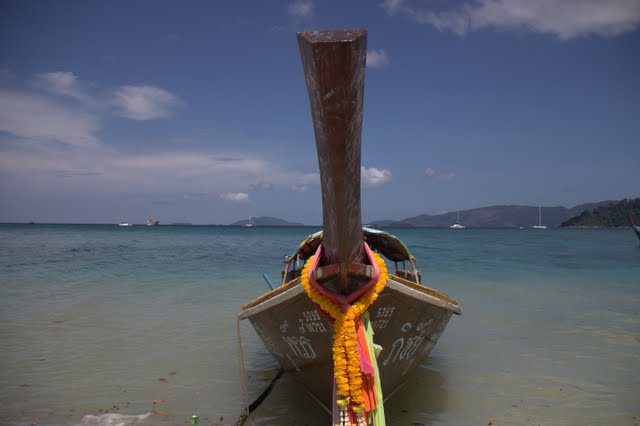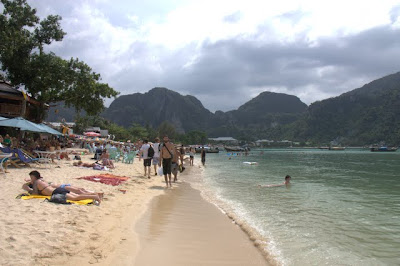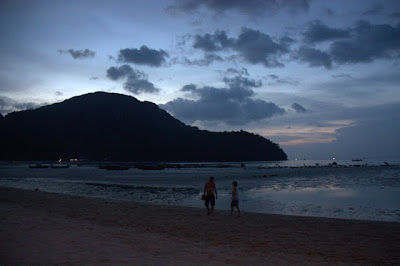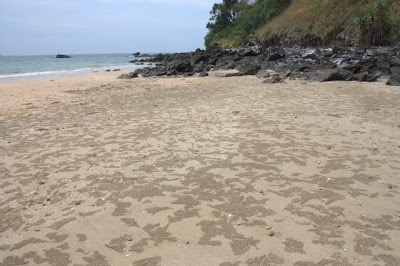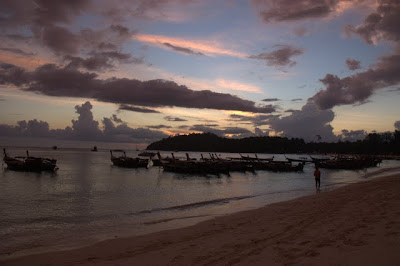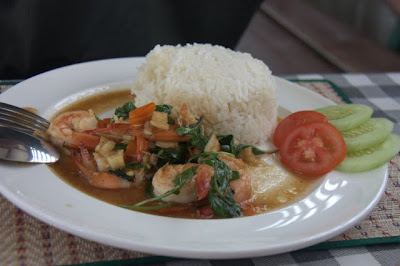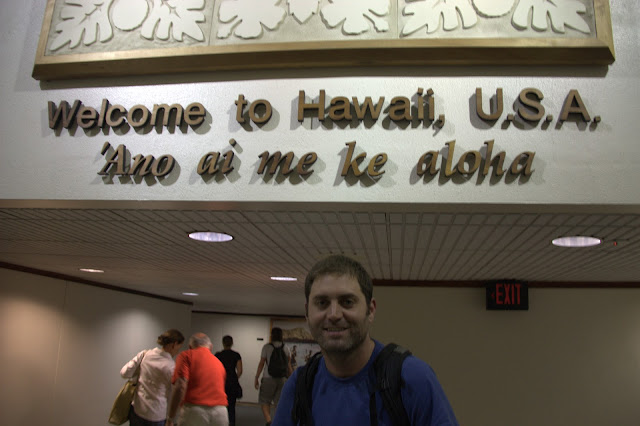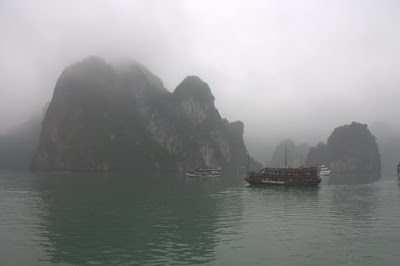Our Trip by the Numbers
Countries visited: 26
Countries with English as an official language: 6 (United States, Ireland, Northern Ireland, South Africa, Fiji, and New Zealand)
Borders crossed: 31 (15 by air, 7 by train, 4 by bus, 4 by car, and 3 by water)
Nights spent in transit: 8
Planes: 18
Trains: 28
Buses (not counting local buses): 35
Boats and ferries: 23
Cars: 7
Scooters: 5
Scooter crashes: 2
Motorcycles: 2
Campervans: 1
Countries where we drove on the left: 5 (Ireland, Northern Ireland, South Africa, Thailand, and New Zealand; Japan, India, and Malaysia also drive on the left but we didn’t drive there)
Forms of transport: 24 (camels, auto-rickshaws, bicycle rickshaw, songthaews, tuk-tuks, scooters, motorcycles, vans, moto taxis, trains, ferries, speedboats, longtail boat, row boat, slow boat, metro/subway, streetcar, cars, pick-up trucks, auto-taxis, river/canal taxi, cable car, funicular, houseboat)
UNESCO World Heritage sites visited: 42
Photos taken: 31,467 (an average of 77 a day taking up 450 gigs of storage!)
Addictions to delicious Cadbury candy bars not available at home: 3 (Moro in Ireland/Northern Ireland; Tempo in South Africa; and Moro Gold in New Zealand)
Days where it rained: 105
Overall percentage of time spent in rain: 25%
Countries with squat toilets: 8 (South Korea, Japan, India, Thailand, Cambodia, Laos, Vietnam, Malaysia)
Times when Amy got really sick: 4 (stomach ailments in Morocco; South Korea; Laos; Vietnam)
Times when Sean got really sick: 5 (stomach ailments in Morocco; South Korea; Thailand; India; Vietnam)
Number of hospital visits: 2 (both Sean for the same bacterial infection, including a two night stay)
Number of mosquitoes bites: impossible to count (There were times where Amy would have 30+ on one limb alone, despite using bug spray!)
Number of “Thai tattoos”: 1 (Okay, it actually happened in Vietnam. And it’s not a real tattoo. Just a nasty burn from a scorching hot moto-taxi exhaust pipe.)
Different beers drank: 127
Books read by Amy: 58
Books read by Sean: 2. (At least 2 others were started but not finished.)
Number of times we heard You Can Call Me Al: 4
Cheapest accommodation: $6.61 in Chiang Khong, Thailand
Most expensive accommodation: $146.43 – a 50 square foot room in New York City on our very first night
Cheapest activity: $0.48 admission fee per person to the Hanoi Hilton
Most expensive activity: $175.50 per person to scuba dive in Kauai, Hawaii
Cheapest dinner: $1.95 for dinner for two in Vietnam
Most expensive dinner: $143.35 for dinner for two in Kobe, Japan
Sean’s cheapest haircut: $3.33 in Saigon, Vietnam
Sean’s most expensive haircut: $34.58 in Paris, France
The Cost to Take a Trip Around the World
I don’t know about you, but I’m incapable of reading about round the world trips without thinking in the back of my head, well that’s great, but how much did it cost?
The truth is, it depends. The title of this post is somewhat misleading. I can’t tell you how much it will cost you to travel around the world. I can only tell you how much it cost us to travel around the world. Everyone’s travel style and tolerance varies widely. Even in the realm of budget travel, there is a lot of variance. So much depends on things like the season, the country, the current economic state, and the strength of your local currency against the foreign currency, let alone personal factors like can you handle sharing a bathroom? Sleeping in a room with strangers? Taking cold water showers? Not having wi-fi? Going without a/c in the tropics? Taking public transport? Long haul bus rides? Eating on the street? Do you want to hop from country to country or city to city or do you like to stay in one place for a long time? Do you eat ramen to stay on budget or do you splurge on nice meals?
Besides travel style and other variables, the other thing to keep in mind when comparing long-term travel budgets is to determine what the numbers include. Some people include pre-trip costs like vaccinations and gear. Some people don’t. Some people include transport in their daily averages. Other people don’t, or only include certain types. Some people couch-surfed or stayed with friends, whereas others had to pay for all of their accommodations. What about things like prescriptions? Gear you pick up on the road? Travel insurance? Health insurance? Renter’s, home owner’s, or car insurance at home? Storage costs of keeping all your crap? Big ticket items like scuba certifications? Souvenirs for yourself? Holiday or birthday gifts for your family? Bills you have at home? Money you lost selling your home or your car at a reduced rate? There’s many direct and indirect costs that factor into how much a trip of this scale costs. When you’re checking out other people’s budgets, make sure you’re comparing apples to apples.
Even though I can’t tell you how much it costs to travel around the world, I’m sharing our numbers with you in the hopes that it may be a helpful starting point to someone who is trying to put together a budget. So without further ado, here’s our…
GRAND TOTAL
For the two of us to travel to 26 countries over thirteen and half months (409 days, to be precise), it cost us $71,897.46.
In this number, I’ve included the items that are most helpful for someone planning a budget:
– day to day costs (such as accommodation, meals, snacks, drinks, alcohol, activity fees, intercountry transport, tips, etc.);
– miscellaneous costs (laundry, ATM fees, exchange fees, gear and supplies picked up on the road, internet, etc.); and
– intracountry (i.e. cross-border) transport ($11,432.11).
I did not include the following items in the grand total. Many of these costs will vary widely based on your own situation. Plus, we didn’t track our pre-trip costs closely. When you are doing budget research, don’t forget to keep these costs in mind even if you don’t include them in your daily average estimate. Remember other people’s budgets may include some, none, or all of these things.
What’s not included:
– Student loan payments paid while we were away
– Minimal car insurance we kept on our car sitting at home
– Renter’s insurance for our items at home in storage (incidentally, I highly recommend looking into a renter’s insurance policy. It was cheap and turned out to cover items we brought abroad – like our stolen SLR. Our renter’s policy covered most of the loss when our World Nomads travel policy did not).
– Extra money saved as a buffer
– Cost of obtaining wills/power of attorney
– Costs of selling house/temporary housing
– Costs of selling house/stuff/car
– Costs of obtaining passports/passport photos/international drivers’ licenses
– Accountant fees for filing our tax returns while we were away
– Vaccinations, doctor co-pays for physician visits before we left, and prescriptions (guesstimate of about $2,500)
– Supplies & gear purchased before the trip (guesstimate of about $4,000 for everything except our SLR camera and camera gear)
– Storage for items we kept at home (about $1400 for the months we were away)
– High deductible health insurance we purchased to cover us in the United States (about $1,673 for the months we were away)
– World Nomads travel insurance ($1,113 for 12 months; we didn’t extend for the last 6 weeks)
– Scuba certifications ($1,201 for both of us to get our PADI certification in Koh Tao, Thailand and our advanced PADI certification in Perhentian Kecil, Malyasia)
– Gifts & souvenirs (about $2,100; includes our souvenirs, Christmas, birthday/Father’s Day/Mother’s Day/general gifts for family and friends, and shipping)
We’re pretty happy with our grand total. We never intended our budget to be firm and unyielding. Instead, we viewed it as more of a guide. We’re not the best budgeters, but it’s funny how lack of an income and a desire to keep traveling will keep you on track. We originally estimated $60,000. Had we not made the decision to add on 6 more weeks in New Zealand and Hawaii, our costs for our original plan of one year would have been about $62,710.
BUDGET IN CONTEXT
To put those numbers in context, we traveled with our budget in mind and watched expenditures, but we generally went for the best value instead of the absolute cheapest. This means, for example, that we might shell out an extra five dollars in Asia for a hotel room that was cleaner and brighter, or perhaps we would take a more expensive train instead of a bus if it got us there a lot faster. We always did our homework to be smart about our spending. We kept a close eye on ways to cut costs, like doing our own laundry when coin-op machines were available, or booking a service directly if it was just as easy to figure it out ourselves, or paying with a international fee-free credit card any place that would take it. We always had a private room and usually had private bathrooms, but from time to time we’d get a room with a shared bathroom if we were in a money saving mood. We sought out rooms with wi-fi and occasionally splurged on a/c. Because we love food and found food to be the way to the heart of a country, we ate almost all of our meals at a restaurant or on the street. We ate what the locals ate most of the time, but threw in some pricier Western style meals when we got sick of the local cuisine. We moved around a fair amount, and followed the weather even if it meant jumping around. We generally only flew when we had to, although we did take a few intercountry flights in India and one in Vietnam. We rented cars in a number of countries, but only compact or older cars. We didn’t shy away from doing activities even if they were costly, taking a when in Rome approach. (See, e.g. food and beer fest in Belgium; staying in a riad in Morocco and a ryokan in Japan; white-water rafting in Slovenia; cruising with Easy Riders in Vietnam; scuba diving in Thailand, Malaysia and Hawaii; taking a cooking class and visiting an elephant conservation center in Thailand; a candlelight tour of Petra; going up to the viewdeck on the world’s largest building in the UAE; getting up close and personal with whales in South Africa; going jetboating in New Zealand; etc.)
COUNTRY AVERAGES
There’s no doubt that WHERE you travel constitutes the biggest difference in your overall trip cost. Traveling through countries that are not as developed will drastically reduce your costs. We averaged $97.54 a day in countries that were generally less developed than at home – think of the type of places where cash is king. Our average was almost double in countries that were more developed, or about $190.69 a day. On the other hand, don’t assume that just because a country is less developed that it automatically is inexpensive. We found countries like Morocco and Jordan to be much pricier than countries like Laos and India (but much cheaper than countries like Spain and South Korea).
(Note: In order to give you an idea of what it costs to travel through different types of countries, these daily averages only include day to day costs (such as accommodation, meals, snacks, drinks, alcohol, activity fees, intercountry transport, tips, etc.) and miscellaneous costs (laundry, ATM fees, exchange fees, gear and supplies picked up on the road, internet, etc.). They do NOT include intracountry (i.e. cross-border) transport).
No big shocker here, but it was our experience that your dollar stretches the furthest in Southeast Asia, which is why we spent four months in that region. You really can get really nice rooms for $12-$25 (as long as you are willing to put up with your fair share of not so great rooms in the same price range, as quality can be somewhat inconsistent). And if you are willing to eat on the street (and hopefully you are, because the food is delicious and that’s how Southeast Asians eat), you really can get dinner for two for a couple of dollars. Our daily average in Southeast Asia was $81.70 a day, and it would have been possible to go much lower. Our daily average in Asia overall was $109.09 – flanked by a very expensive Japan on one end and a very cheap Laos on the other.
By sticking mostly to Central Europe, our European daily average was $175.92. (Note: our earlier post about European costs did not include intercountry transport, which is why those figures were lower).
Fiji – $53.48
- Total costs: $53.48
- # of days: 1
- Notes: We were only there for a long layover.
Laos – $59.82
- Total costs: $1,435.68
- # of days: 24
- Notes: The cheapest country for us!
Germany – $72.71
- Total costs: $218.12
- # of days: 3
- Notes: No lodging costs because we stayed with a friend.
South Korea – $74.10
- Total costs: $740.98
- # of days: 10
- Notes: No lodging costs for 7 days while we stayed with a friend.
Thailand – $80.44
- Total costs: $4,021.83
- # of days: 50
- Notes: Love Thailand! Includes travel through the islands during high season. We also did a lot of shopping/replenishing in Thailand so that is reflected in the cost.
Malaysia – $82.92
- Total costs: $1,243.84
- # of days: 15
- Notes: Similar in cost to Thailand, but we found lodging value to be better in Thailand. Transport in Malaysia tended to be nicer, though.
Cambodia – $91.53
- Total costs: $1,006.84
- # of days: 11
- Notes: Cambodia is pretty inexpensive, but two costs drove up the price somewhat: eating at restaurants where funds go to NGOs and fees for Angkor Wat.
Vietnam – $100.16
- Total costs: $2,504.03
- # of days: 25
- Notes: These costs drove up the price: one internal flight and guided tours (including a three day, two night Easy Rider tour, hiring a driver after Sean got sick to see the Vihn Moc Tunnels, and a mid-range overnight Halong Bay tour. Otherwise, Vietnam is a good value; you do get more for your money in lodging and food than the rest of SE Asia.
India – $107.09
- Total costs: $3,426.74
- # of days: 32
- Notes: India’s food and lodging are inexpensive. In fact, we found increasing your budget does not always bring a corresponding increase in quality. Costs are higher because we flew internally several times, including to the Andaman Islands.
Hungary – $108.78
- Total costs: $870.24
- # of days: 8
- Notes: Hungary is a good value in Europe!
Poland – $120.63
- Total costs: $482.50
- # of days: 4
- Notes: We only there for a short time, stayed solely in Krakow and ate pierogies most of the time.
UAE – $121.64
- Total costs: $243.28
- # of days: 2
- Notes: We were there twice. The first time, only to sleep in a hotel. The second time, we had a really long layover and went to the Burj Kalifa.
NYC – $129.74
- Total costs: $259.47
- # of days: 2
- Notes: This is for 2 days, one night. Our tiny hotel room alone was more than the daily average.
France – $130.54
- Total costs: $1,958.05
- # of days: 15
- Notes: No lodging costs except for one night in a B&B in Mont St. Michel and an air mattress because we stayed with a friend in Paris.
Czech Republic – $149.21
- Total costs: $1,193.71
- # of days: 8
- Notes: We were mainly in Prague, except for a day trip to Plzen. Costs tend to be higher in Prague, but you get a lot for your money. Beer is really cheaper than water here!
Jordan – $149.87
- Total costs: $1,348.84
- # of days: 9
- Notes: The activities in Jordan drive up the cost, especially the entrance fees to Petra.
Croatia – $161.39
- Total costs: $2,582.17
- # of days: 16
- Notes: This includes island hopping by ferry and a car we rented to go to Sean’s family’s hometown and Plitvice National Park. Food tended to be expensive (and average).
Slovenia – $175.83
- Total costs: $1,406.67
- # of days: 8
- Notes: This includes a car we rented for part of the time.
Morocco – $180.68
- Total costs: $2,710.17
- # of days: 15
- Notes: This includes a rental car and shady fees charged by the rental company.
Portugal – $186.78
- Total costs: $1,307.47
- # of days: 7
- Notes: This includes a rental car.
Northern Ireland – $195.51
- Total costs: $1,173.03
- # of days: 6
- Notes: This includes a rental car.
Spain – $202.83
- Total costs: $4,665.01
- # of days: 23
- Notes: This includes a rental car for a few days.
New Zealand – $205.03
- Total costs: $6,150.98
- # of days: 30
- Notes: Includes campervan rental in shoulder season. We did cook a lot, but when it rained for days on end, we ate out more than we planned to get us out of our campervan.
South Africa – $222.89
- Total costs: $6,017.93
- # of days: 27
- Notes: This includes a rental car.
Japan – $237.02
- Total costs: $7,110.45
- # of days: 30
- Notes: This includes a Japan Rail Pass.
Hawaii – $237.36
- Total costs: $2,136.22
- # of days: 9
- Notes: This includes a rental car.
Ireland – $261.03
- Total costs: $3,654.45
- # of days: 14
- Notes: This figure is estimated; we lost track of our budget quickly after many a round of Guinness. Costs are also higher because we rented a car and went out more than usual while our friends were visiting.
Belgium -$271.59
- Total costs: $543.17
- # of days: 2
- Notes: This just for a 2 day, one night trip to Brussels. Again, costs were probably higher because we drank a lot with our friend (alcohol will get you every time!) and bought an excessive amount of chocolate.
SETTING THE BUDGET AND MAKING IT HAPPEN
Traveling around the world sounds like a pipe dream, but all it takes is prioritizing travel above other things in your life, whether it be your car, your house, your wardrobe, your gadgets, etc. Getting Sean’s sweat equity out of our fixer-upper before we left was instrumental increasing our money stockpile, but so was living well below our means and several years of saving. If you want to do it – really want to do it in reality, not just in theory – you can make it happen. And you should make it happen. Because I can tell you, as much as it stung to find out in the middle of India that the sellers to whom we sold our house – you know, the one that we poured our hearts and souls into for four years – sold the house for $30,000 more less than a year after we sold it to them, the sting dissipates quickly when you realize, holy crap, I’m in India.
If you want to travel but don’t have the ability, desire, or time to save $60,000 or $70,000, don’t be scared by our numbers. It is absolutely possible to travel around the world for a long period of time for less than we spent. Check out two good round-ups of other traveler’s budgets here and here. If you want to or need to spend less, there are many ways to reduce the grand total. (And many ways to increase it, should you want to travel more extravagantly). For example, to cut costs, go for 11 months instead of a year. Go to fewer places for longer periods of time. Stick to countries that are less developed. Go in the off season. Skip pricey activities and stick to soaking up the atmosphere. Select accommodations where you can cook yourself. Consider couch-surfing. Don’t rent a car and take public transport. Limit the amount of fancy gear you buy in advance. There’s lots of ways to save, so don’t let money stop you from traveling. Prioritize what it important to you when traveling – location, accommodations, activities, comfort, value, lowest cost, weather – and the rest will fall into place.
We were fortunate to have enough money in the bank that we didn’t have to be slaves to our budget and could travel, for the most part, without money hindering our choices. We could have spent less, sure, but at this stage in our lives, we wanted a certain level of comfort and decided if we were going to do it, we might as well do it. And we could have spent more; there were times when we felt like spending a little more money would have allowed us to do more things or be more comfortable. But overall, we were happy with our style of travel and what it cost to travel that way. Because there are so many variables, setting your budget will not be an exact science. Once you have an idea of how much it cost other people to travel the world, you may want to pick a number that is feasible for you to save and that you feel comfortable with spending, and work from there to make your travels fit your number.
Four Thai Islands
For 24 days in March, we island hopped our way from Thailand to Malaysia, criss-crossing the mainland twice to go from the Gulf of Thailand over to the Andaman Sea and back over to the South China Sea. There was a stretch of 12 straight days where we didn’t hit the mainland, not even to cross the border, moving between islands by ferries of various sizes and shapes. We hit four islands during the Thailand portion: Ko Tao, Ko Phi Phi, Ko Lanta, and Ko Lipe. We had been looking forward to lazy days, and for that, the Thai islands didn’t disappoint, which is why I am able to sum up our two weeks in one post. We had next to zero cultural interactions, and there’s only so many ways to describe our beach bum lives. We visited the islands during the high season and found ourselves surrounded by tourists. Unfortunately, all too many of them were of the young, partying variety, the types to walk around shirtless or hanging out of a bikini hooting and hollering in a rather conservative (and in some of the islands, Muslim) society. The tourism industry is all too eager to cater to these tourists, with shoddily constructed cheap construction tacked up haphazardly next to sewage and water pipes jutting out of the ground, tourist agencies and shops selling the same crap, and most annoyingly, pounding bass music at night. I didn’t expect to be the only ones around, but finding decent accommodation in a quiet location became the bane of our existence. Everything on the islands is more expensive than the mainland and food and accommodation is not nearly as good. But we managed to find some good stuff, we just had to look a little harder. Plus it’s hard to be cranky when the water’s warm and crystal clear, the sand is white and fine, and the sun is shining. Here’s our take (and photos, of course) from the four islands we visited:
Ko Tao
Despite spending 5 nights on Ko Tao, I couldn’t tell you a thing about the island other than it’s great at churning out certified scuba divers at dirt cheap prices. We went there with a one track mind and left after successfully getting our PADI Open Water scuba certification from Buddha View Divers for about $325 a person. Other than that, we saw diddly squat. While we could have made more of an effort to explore, we felt lazy after days spent doing homework for our class and mastering new skills out in the water. So that’s all I have to say about that. (Spoiler alert: we ended up getting our advanced diving certification through Turtle Bay Divers on the Perhentian Islands in Malaysia. More on that later, but if I had to do it over again, I’d probably would have gotten my open water certification through Turtle Bay as well since it was actually cheaper similarly priced [Sean tells me I’m remembering wrong], classes are more intimate and less like a factory, and our instructor Harun was awesome. Nevertheless, the diving schools on Ko Tao get the job done efficiently).
Ko Phi Phi
Ko Phi Phi: definitely winning the award from my least favorite Thai island. You may remember Phi Phi as it was destroyed by the tsunami in 2004. Seven years later, many of the signs of the tsunami are gone, save for new signs displaying the evacuation route. I’m not sure if it was this bad pre-tsunami, but today, it has little charm and it’s crammed full of tourist agencies, trinket shops and clubs. Most people that are there seem to be there to party. In Phi Phi’s defense, we only were there for 2 days and didn’t get a chance to explore beyond the tourist-packed village close to the ferry pier. It rained rather hard while we were there, pinning us in our room and cancelling the boat outing we had planned. And it is a beautiful island, with two crescent shaped bays curving inwards to meet each other. But overall it’s not my cup of tea.
Ko Lanta
Ko Lanta may be the least tropical of the islands we visited, but it probably was my favorite. For starters, it’s bigger than some of the others (but easily circumnavigated in a scooter), meaning that it is less crowded and more spread out. We stayed on Klong Khong Beach on the central western coast, but explored all over the island from the popular Klong Dao Beach in the northwest to the secluded beaches and national park down a dirt road at the southern tip to the less beachy but quaint east coast where the locals live. As we went south in Thailand, the Thai Muslim culture became more predominant, and Muslims operate most of the guesthouses and restaurants on Lanta. The longer we stayed, the more we discovered little hidden gems like Shanti Shanti’s homemade ice creams and sorbets (we tried lime and papaya, chili mango and cinnamon) or Bulan Lanta’s bargain homemade muesli. Our favorite past time on Ko Lanta was sunset watching; there are great sunsets every night up and down Lanta’s long western coast.
Ko Lipe
When you’re daydreaming of escaping to the Thai islands at work, Ko Lipe might be the closest to the picture you have in your mind. Only an hour and half to the Malaysian border by boat and in the middle of a marine reserve, it’s less developed and a little harder to get to than the more northern islands. There’s no pier; the ferry picks up and drops off in the middle of the bay. The water was the bluest and clearest of any of the Thai islands we visited and the sand the whitest and softest. Unfortunately, some of those fabulous beaches can also be strewn with a little too much garbage for my liking. Some people fear Ko Lipe is turning into a mini Ko Phi Phi. Like Ko Phi Phi, motor traffic is prohibited on much of Ko Lipe, and any development that is occurring is shortsighted. It’s also a tad more expensive than even Ko Phi Phi (although we managed to find a decent hut for under $20, albeit without a sink). Hopefully, development won’t run amok, as it is a beautiful gem.
Re-entry
After being out of the country for 13 months, our official re-entry into the United States was rather anti-climatic. I didn’t expect our homeland to give us any sort of fanfare, of course, but a smile from the Department of Homeland Security official or even a second glance at our effort to squeeze all 26 countries onto the tiny box under the line inquiring which countries we visited might have been nice. But our immigration official clearly never got the memo that he was the “face of the United States” even though he was sitting right underneath a poster that told us just that. Hopefully the United States reserves its surliest officials for its own citizens and puts the smiley ones in the foreign lines.
As I mentioned the other day, we were experiencing the second May 3, 2011 of our lives, a mistake that luckily only cost us $44 extra dollars in extra fees. (And, of course, the cost of an extra day in Hawaii, but every day in Hawaii is priceless). The first May 3 was mostly spent in the air (unfortunately utterly upright in a tiny non-reclining seat), with a small tidbit spent on the ground in Fiji. We couldn’t resist taking a peek at Fiji during our eight hour layover, even though it meant going through immigration and customs, withdrawing Fijian dollars, and haggling with a taxi driver. It’s surprising how hard it is to find the local cuisine in many countries. Everyone we asked for a restaurant recommendation kept suggesting Indian. We finally figured out why – turns out there is a proliferation of Indians in Fiji and their business savvy makes Indian food the most visible. We ended up getting a taste of Fiji via a Mediterranean restaurant owned by an American. They fixed us up some tasty mahi-mahi in a Fijian style along with cassava chips, and we spent much of our time chatting with a really friendly Fijian waitress. Much better than hanging out in the transfer room at the airport, although I got positively attacked by Fijian mosquitoes who honed in on the fresh foreign meat that are my ankles the second I walked out of the airport. I’m still paying for our brief foray into our 26th country visited on this trip. My ankles are blotchy and swollen; the itching is so bad that it kept me up last night despite only getting a few hours sleep on our flight. Thank goodness for Asian Tiger Balm.
Luckily, May 3, Round 2 turned out to be a good day. Our first order of business in the United States was to try the pretzel M&Ms that came out during our time away and that the rest of the world is not privy to. (They get crispy M&Ms instead, a forgotten relic here at home). We found them to be crunchy, salty and sweet as promised. Our next little delight was our rental car. We had reserved a $20 a day budget car on Hotwire and despite getting the hard sell to upgrade for an extra $11 a day at the desk, the parking lot attendant gave us a free upgrade to a brand-new (and rather funky) Chevy HHR out on the lot.
Although I was cursing our laziness in not reserving accommodations in advance because it meant we’d have to try to find affordable lodging in the midst of luxury resorts in our dazed and sleepy state, finding a place to stay for the next eight nights turned out to be relatively painless. We have to be the only people that show up in Kauai without reservations. The locals are friendly and when inquiring where we were planning to stay as a conversation piece, they hid their surprise well with a quick well, that’s good, keeping it flexible! when we responded sleepily that we didn’t know. We had picked up a Kauai Revealed guidebook at the airport since we liked the Revealed series so much on our honeymoon and found that most of the accommodation recommendations had been moved on-line since then. The book is a far cry from Lonely Planet’s fly by the seat of your pants approach and is clearly geared toward advance planners (which is most of the people visiting Hawaii; hell, half of them come here in tour groups). Nevertheless, despite our wavering over whether it was ridiculous to buy a guidebook for a destination in your own country, the guidebook has already served us well several times. Most notably, one of the few accommodation suggestions it had in the book was for Kapa’a Sands Resort, our home for the next week. They’re awesome little condos right by the ocean on the east side of Kauai. Ours is just a studio with a balcony and a kitchen, but it feels like a mansion to us. All of this is a long-winded way of saying that I had my upteenth reminder on this trip not to sweat the small stuff and much of the time it’s just better to let things work themselves out.
Other than Sean having to endure an hour-long haircut hacking by a crazy drunk hairdresser who spoke to him at length about life forces on the island and the apparently fascinating way his hair grows, we’re enjoying our return to the States. Our culture shock at being interjected back into the United States was cushioned somewhat by our month spent in New Zealand. We already gawked at the prices and the large people (present in every car-loving country we’ve visited on this trip; food for thought) and stuffed ourselves with cheese (a food sorely lacking from our Asian diets). But culture shock is here nonetheless. Hawaii might be our most unique state but it is a state for sure. We marveled at not using a plug adapter and driving on the right (Sean’s only veered to the left once!) Our Cokes at lunch were enormous and still could be refilled for free; at dinner, the waitress automatically brought us ice waters at the beginning and our check at the end. Speaking of dinner, we had giant portions of long-awaited honest-to-goodness BBQ and (moist!) chocolate cake. We stocked up on Reese’s Peanut Butter Cups at the grocery store (how could the peanut butter and chocolate taste sensation not have spread worldwide?) and chose cereal from an entire aisle of options. We’ve listened to non-stop coverage about Osama Bid Laden’s death (as opposed to a quick mention on the news in New Zealand) and there’s ridiculous reality shows and game shows that didn’t exist when we left (by the way, Mark Graff is really into his new gig). And please tell me people don’t actually wear pajama jeans?!?!
Moody Mystical Halong Bay
Our last stop in Vietnam was at the moody, mystical Halong Bay. Halong Bay gets a bad rap because it is one of the top tourist spots in Vietnam and it is difficult to see it without going along with a pre-arranged tour. Some tour operators are honest, but many others cut corners. With tours ranging from luxury to bottom of the barrel, it is hard to trust that you will get your money’s worth.
Because of all of the horror stories, I was apprehensive about going to see Halong Bay. Then, just a few days before we planned to visit Halong Bay, something far worse than shoddy service or overcrowding happened. One of the junk boats used for tours of the bay sunk in the early morning hours as people were in their cabins sleeping, killing 12 tourists and crew, including two college-aged American girls. By all accounts, the tour was one of the cheap budget tours, but it still doesn’t make you feel confident about your safety.
We thought about not going, but considering Vietnamese officials were inspecting every boat rigorously in the aftermath of the sinking, we decided to book a one night, two day mid-priced tour through our hotel with Amigo Cruises. The boat was relatively new, with all important safety features like life jackets. I’m not going to lie; I slept a lot easier because our room was on the upper deck. While our tour wasn’t without issues (average food, gas smell in an otherwise nice cabin room, rushed kayaking in the Bay), the tour allowed us to experience beautiful Halong Bay safely.
Despite all of the tourists, there’s a stillness and quietness in Halong Bay. I’m sure this feeling was exacerbated by the somberness of what had transpired only days before, as well as the thick fog that hung heavy in the air, especially on our first day. With limestone karsts jutting up from the waters all around you, it is a beautiful place worth visiting, as long as you can do it safely. I hope that this latest accident causes safety standards to increase; unfortunately, I don’t have high hopes as this is the first fatal boating accident in Halong Bay.


